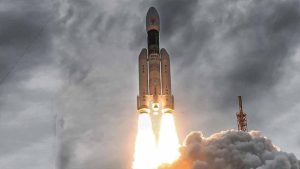
BENGALURU: Indian Space and Research Organisation (ISRO) divides Chandrayaan-3’s roughly 40-day journey to the moon into three distinct phases: Earth-centric, lunar transfer, and moon-centric.
Phase 1 is now partially completed, with liftoff and the separation of Chandrayaan-3 from its rocket completing the prelaunch, launch, and ascent periods. Phase 1 of the mission is now in the Earth-bound maneuver stage.
Chandrayaan-3 will orbit Earth five times during this chapter. The spacecraft’s distance from Earth increases with each swing past our planet. The final sweep will assist in putting Chandrayaan-3 on a lunar transfer trajectory, sending it to the moon during the lunar transfer phase (Phase 2).
Chandrayaan-3 will then enter lunar orbit, signaling the start of the moon-centric phase (Phase 3). The mission will then orbit the moon four times, getting closer to the moon’s surface with each loop.
Chandrayaan-3 cannot simply fly from Earth orbit to land on the moon.
When spacecraft return to Earth from space, the atmosphere of our planet drags on them, slowing their descent. However, because the moon has an extremely thin atmosphere, spacecraft must slow down and make a much more gradual approach.
Chandrayaan-3 will launch into a circular orbit around 62 miles (100 kilometers) above the lunar surface using its engines. The mission’s lander and rover will then separate from the propulsion module. The lander will land in the moon’s south polar region at a speed of less than 5 mph (8 kph). Chandrayaan-3’s propulsion module will remain in orbit around the moon, communicating with the rover and lander.
The orbiter from the Chandrayaan-2 mission, which arrived at the moon in 2019, will also be used as a backup communications relay by the Chandrayaan-3 vehicles. The lander-rover pair on Chandrayaan-2 also crashed during their lunar touchdown attempt in September 2019.


